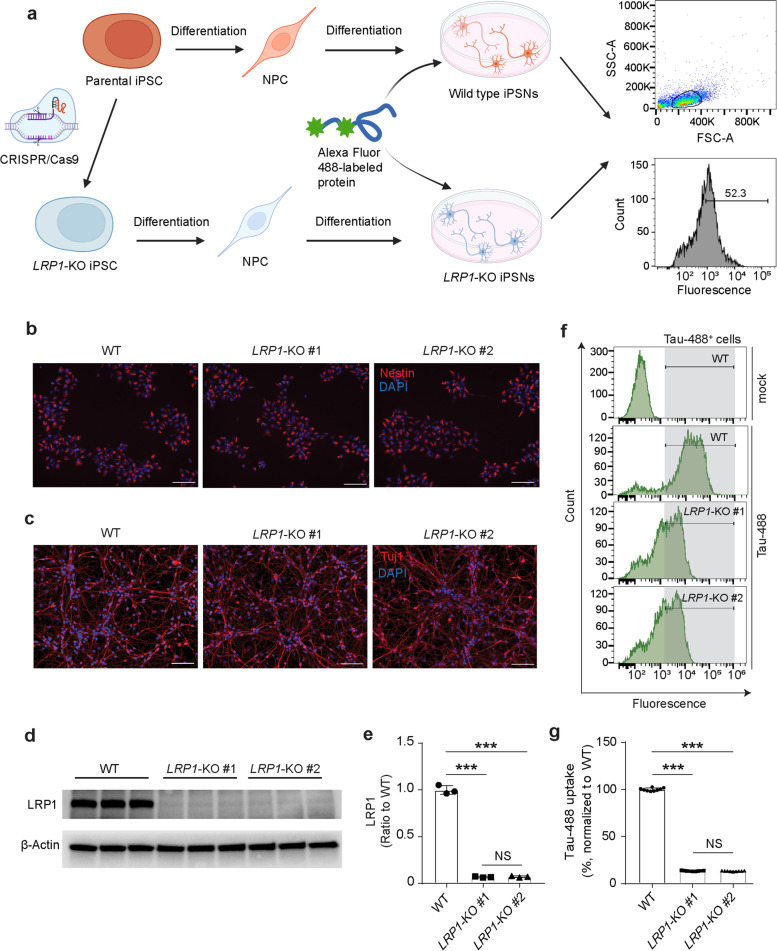Fig. 1.
Generation and validation of human induced pluripotent stem cells (iPSCs)-derived neurons (iPSNs) with LRP1 gene knockout (LRP1-KO). a Schematic diagram of the workflow for LRP1-KO iPSC generation, neural differentiation, and protein uptake assays. LRP1-KO iPSC colonies were obtained using CRISPR/Cas9 gene editing stratagy. Neural progenitor cells (NPCs) were then induced from the iPSCs and further differentiated into iPSNs. On day 14 to 16 of iPSN differentiation, neurons were treated with fluorescently labeled proteins and the uptake was measured by flow cytometry. b Immunofluorescence images showing NPCs from all three lines (WT, LRP1-KO#1, and LRP1-KO#2) were positive for neural precursor marker, Nestin. Scale bars, 100 μm. c, Immunofluorescence images of iPSNs from all three cell lines were positive for neuronal marker, Tuj1. Scale bars, 100 μm. d and e, Detection and quantification of LRP1 protein levels in WT and LRP1-KO iPSNs via Western blotting. f and g, Endocytosis of human tau in WT and LRP1-KO iPSNs measured by flow cytometry (100 nM, 3 h of treatment). Experiments in (f and g) were performed in technical duplicates or triplicates over three independent experiments. All data are expressed as mean ± s.d. with individual data points shown. Data were analyzed by One-way ANOVA with Tukey’s multiple comparisons test. NS, not significant; ***P < 0.001

